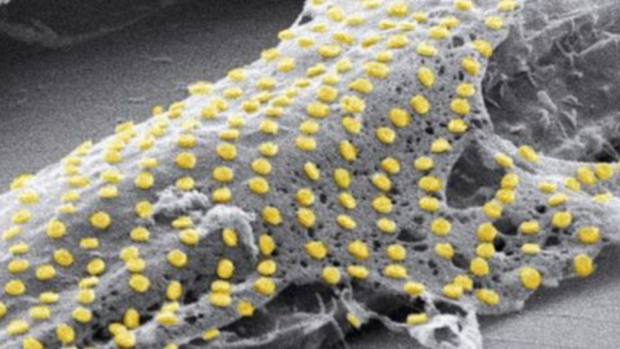Have you ever considered getting gold tattoos not just for style, but for scientific purposes? Scientists at Johns Hopkins University have made a groundbreaking discovery by finding a way to imprint gold metal on microscopic living cells. Gold is commonly used in complex circuitry, so this finding could potentially revolutionize medicine by allowing us to connect electronic devices to cells. Imagine having a blood pressure monitor constantly monitoring your heart and notifying you if there are any abnormalities. It could even alert paramedics in case of an emergency. Moreover, this technology could detect early signs of cancer and enable the removal of harmful cells before they become a major threat. Not only that, but it could also bring us closer to the advancement of cybernetic implants for enhancing our bodies.
In this article, we will explore how scientists were able to put gold tattoos on living cells and delve into the purpose of their research. Additionally, we will discuss other recent medical breakthroughs that have been contributing to the advancement of healthcare.
To achieve the gold tattoos on cells, researchers at Johns Hopkins University utilized a technique called nanoimprint lithography. This process involves embedding microscopic patterns on objects. It has various applications in industries like semiconductor production. The team printed nanoscale gold lines or dots on a silicon wafer coated with polymer using nanoimprint lithography. The polymer was then dissolved to isolate the gold nanoarray, which was transferred to a glass surface. The gold was functionalized with cysteamine and covered with a hydrogel layer. With the help of gelatin, the patterned side was attached to live fibroblast cells. The hydrogel was subsequently degraded to expose the gold pattern on the cell’s surface.
According to David Gracias, the lead researcher at JHU, their approach is cost-effective and can be used to attach nanoscale components such as antennas, circuits, and electrodes. This research can pave the way for the development of biohybrid materials, bionic devices, and biosensors.
Gracias envisions a future where we have sensors to remotely monitor and control the state of individual cells and their surrounding environment in real-time. By tracking the health of isolated cells, diseases could be diagnosed and treated at an early stage, preventing damage to the entire organ. This level of control over cells could potentially lead to significant improvements in our bodies through the use of advanced devices.
In addition to the gold tattoos on cells, there have been other remarkable medical research projects. LabGenius, a medtech company, has developed an artificial intelligence system that facilitates the creation of treatments for previously incurable diseases. They have created a machine learning model that helps generate synthetic antibodies. This significantly speeds up the process of finding viable therapeutic antibodies, which used to be a long and painstaking task.
Google is also involved in medical advancements with its medical chatbot, Med-PaLM 2. The chatbot is designed to answer medical questions for patients in countries with limited access to doctors. Although still in the testing phase, it has the potential to provide valuable medical information to those in need.
In conclusion, Johns Hopkins University researchers have made a groundbreaking discovery by creating gold tattoos on living cells, which could open up new possibilities in the field of medicine. They believe it could lead to the development of cutting-edge biomedical devices and improve cancer detection. Furthermore, it has the potential to enhance our bodies with cybernetic implants. While more research and development are needed, this discovery marks a significant step towards the future of healthcare. Stay updated with the latest tech trends and tips on Inquirer Tech.
Denial of responsibility! VigourTimes is an automatic aggregator of Global media. In each content, the hyperlink to the primary source is specified. All trademarks belong to their rightful owners, and all materials to their authors. For any complaint, please reach us at – [email protected]. We will take necessary action within 24 hours.


